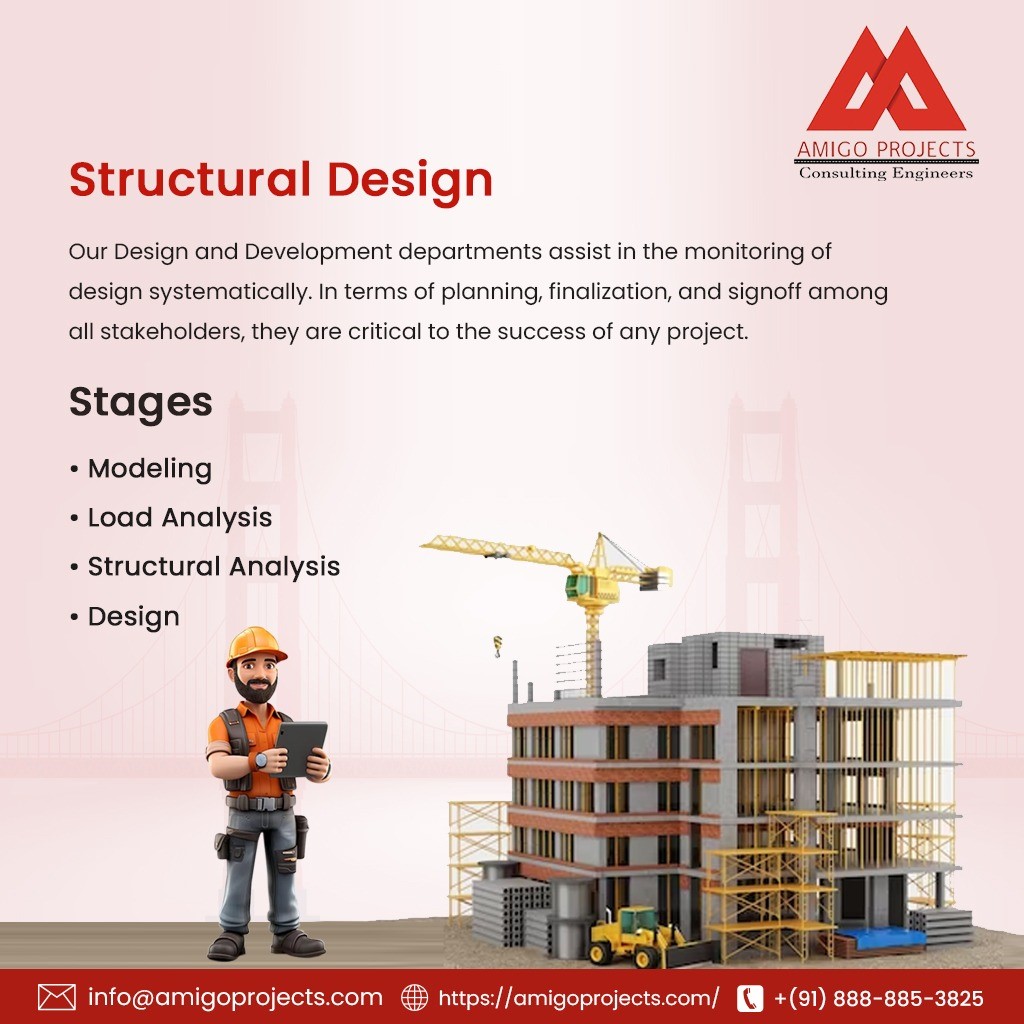
Have you ever stopped to think about what keeps buildings upright? It's not just bricks and beams; it's like a hidden power called structural design.
Just like the invisible framework beneath a masterpiece of art, structural design provides the foundation for every structure we encounter. It's the meticulous analysis of forces, the careful selection of materials, and the creation of a skeleton that can withstand the test of time and the elements.
From the weight of a skyscraper to the relentless battering of a hurricane, structural design anticipates and mitigates these challenges, ensuring the safety and stability of the structures we rely on.
This article delves deeper into the world of structural design. We'll explore the different structure that requires structural design, applications, the top players in the field, and more.
Structural design is the process of planning, analyzing, and creating a safe and stable framework for a building or structure. It involves considering various factors like the type of structure, the materials used, the weight it needs to support, and the environmental forces it will encounter (wind, earthquakes, etc.). Structural engineers are the masterminds behind this process, using their knowledge of physics, mathematics, and engineering principles to ensure the structure stands strong for years to come.
Design of steel and RCC structures is a core aspect of structural design. Structural engineers specialize in these two prevalent materials, each with its advantages and applications. Steel offers an exceptional strength-to-weight ratio, making it ideal for long-span structures and high-rises.
RCC (Reinforced Cement Concrete), on the other hand, is known for its affordability, fire resistance, and moldability, making it a popular choice for various residential and commercial buildings.
Here are some examples of projects requiring steel structure warehouse design:
Structural design analysis services are crucial throughout the design process. Structural engineers employ sophisticated software and analytical methods to assess the behavior of a structure under different loading conditions.
This analysis helps identify potential weak points, optimize material usage, and ensure the structure meets all structural design standards. These standards, established by national and international organizations, provide a benchmark for safety and performance.
Structural design plays a crucial role in all types of buildings and structures, from your everyday home to towering skyscrapers and intricate bridges. Here are some examples:
Structural design is crucial for several reasons:
The structural design industry is filled with talented and experienced firms. Here, we want to highlight Amigo Projects as an example of a company known for its expertise and dedication to structural excellence.
Amigo Projects has a proven track record of delivering high-quality structural design solutions for various projects. They employ a team of skilled structural engineers who utilize the latest technology and meticulous analysis to create safe, efficient, and sustainable structures.
So, next time you look up at a tall building or walk through a bridge, remember the invisible builder – structural design! It's the secret plan that keeps everything safe and strong, kind of like the hidden skeleton that holds up your body. By understanding this concept, you can appreciate the amazing work of structural engineers who make sure our world stays standing tall!
1. What exactly is structural design?
Structural design is like the blueprint for a building's bones! It involves figuring out how strong a building needs to be, what materials to use (like steel or concrete), and how everything fits together to hold everything up safely.
2. Why is structural design important?
Think of it like this: without a good plan for the bones, a building could be wobbly or even collapse! Structural design makes sure buildings are safe for people to live, work, or play in, even during storms or when they hold a lot of stuff.
3. What kind of buildings need structural design?
All buildings, big and small, need structural design! This includes houses, schools, hospitals, skyscrapers, bridges, and even warehouses.
4. What are some different types of structural design?
There are many ways to design a building's structure, depending on the size, purpose, and materials used. Some common types include steel structures, concrete structures, and a combination of both!
5. Do I need a structural engineer for my home renovation?
You might! It depends on the complexity of your renovation. Generally, a structural engineer is needed if your project involves:
6. What are some warning signs that a building might have structural problems?
If you notice any of these signs, it's important to have a professional inspect the building as soon as possible.